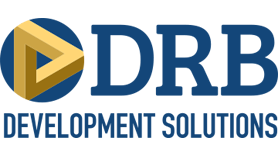One of the most common mistakes made by Owners is failing to provide a budget for the design team to achieve. Too often we find that an Owner has provided the designers a concept or idea of what the project is to achieve, seeking some spectacular look or feel. Then Owners let the design team create that image and feeling. I am sure there often is a “notional discussion” of a budget but in my experience that is never really heard by the designers or resurrected by the Owners until after the first pricing exercise.
Please do not get me wrong, this reactionary practice has kept our firm very busy for more than 35 years. We are repeatedly called upon to assist an Owner and design team “return a project to the budget”. I am a believer in the proactive approach requiring the design team to “Design to a Budget” instead of the reactionary “Budget a Design”.
The proactive approach requires Ownership to clearly define their space program and apply a budget to that program. It is then provided to the design team who must first confirm they can achieve the desired project design requirements and aesthetics for the prescribed budget. Result – commitment on the front end from the design team. This is easiest when creating repeatable design concepts such as business hotels, office buildings and public buildings. Controls can be put in place throughout the design to assure the design meets the program and budget at interim steps along the way. This offers a predictable outcome when the design is completed and the Owner maintains their schedule without additional consulting costs.
Design to a Budget can also be used for unique projects. For more than two decades we worked with two prominent developers creating unique properties around the world applying this proactive approach. Disney and Kerzner International used this approach to maximize the WOW factor and control the design to a budget. Ownership would create a guest experience vision with the design team. The design team would take the vision and develop a design that would meet or exceed the vision. The cost consulting team would work with the design team providing cost estimating and material guidance for how to achieve the unique designs within the stipulated budget.
Sol Kerzner was exceptional at this. If the team exceeded the budget, he directed the team to evaluate all of the design aspects and eliminate the marginal WOW items reducing the costs to the stipulated budgets. Next, he would challenge the team with ideas and concepts to increase the guest experience and the team would again develop a design solution, keeping the core elements and adding additional guest experience elements. The pricing exercise would be repeated, and the culling of the marginal items would be repeated until achieving the desired outcome at the budget.
The reactionary approach is Budgeting a Design. When a design team’s main focus is on the project image, they often include additional “like to have” ideas as part of the design. The design team will also include an artistic flair to set the project apart from others. After the presentation of the concept, the owner will ask “what is the cost?” The answer is then developed by the cost consultant or contractor whereupon they develop a budget based on the design.
When presented the cost estimate, the owner’s reaction frequently conveys that it’s over the amount they want to spend and that costs need to be reduced. The reasons behind the overage may be due to an increase in project square footage, unique architectural features or some other design item that an owner has difficulty removing from the project. Very often these cost reductions are challenging to identify and eliminate.
Recommendations for Owners and Design Teams
• The owner should clearly communicate the established budget at the outset of the project along with the project criteria. Challenge the design team to meet the budget and expectations and get their confirmation they can achieve the desired results within the budget. • Stay focused on the core project needs and consider only those extras that add project value. • Challenge every addition and validate that it is necessary for the project.


